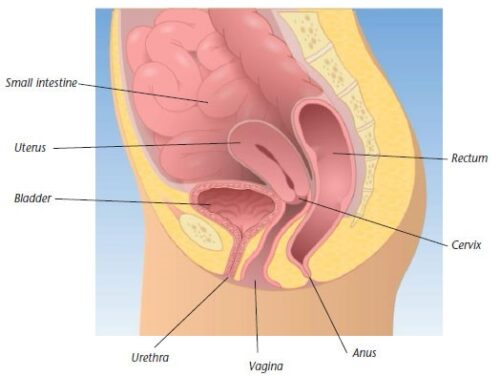Pelvic Organ Prolapse
 Pelvic organ prolapse is a disorder in which one or more of the pelvic organs drop from their normal position. It is caused by injury to the muscles or tissues that support the pelvic organs.
Pelvic organ prolapse is a disorder in which one or more of the pelvic organs drop from their normal position. It is caused by injury to the muscles or tissues that support the pelvic organs.
The main cause of this injury is pregnancy and childbirth, especially vaginal childbirth. Other causes include prior pelvic surgery, menopause and aging. The condition highly hereditary.
In pelvic organ prolapse situations, there is often more than one organ that can be affected at the same time.
STAGES OF PROLAPSE
Prolapse occurs in stages starting with mild cases where the organs have dropped just a short distance. Severe cases of pelvic organ prolapse are those where the organs have dropped a much greater distance.
 TYPES OF PROLAPSE
TYPES OF PROLAPSE
Uterine prolapse is when the uterus drops down into the vagina. In severe uterine prolapse, the uterus may protrude from the vagina. Uterine prolapse can simultaneously occur with bladder prolapse, small intestine prolapse or rectal prolapse.
Cystocele is a bladder prolapse that can occur in a woman without a uterus. The bladder drops down and creates a bulge into the front wall of the vagina. In severe cases, the bulge can protrude outside the vagina. It may occur with prolapse of the vaginal vault. Bladder prolapse may cause involuntary loss of urine while sneezing, laughing or coughing, which is called stress incontinence.
An enterocele is when the small intestine can drop downward, creating a bulge into the vaginal vault. Small intestine prolapse may occur with bladder prolapse or rectal prolapse.
Rectocele is a rectal prolapsed into the vagina. The rectum can drop downward, creating a bulge into the back wall of the vagina. In severe cases, the bulge can protrude outside the vagina. It can also occur with uterine prolapsed, bladder prolapse, or small intestine prolapse.
 PROLAPSE TREATMENTS
PROLAPSE TREATMENTS
There are surgical and non-surgical treatments available for prolapse.
Pessaries are a non-surgical treatment option that can relieve prolapse symptoms. A pessary is a device that is inserted into the vagina to provide support for prolapsed organs.
If you think you may have a pelvic organ prolapse make an appointment for a consultation with one of our board certified obgyn providers.
